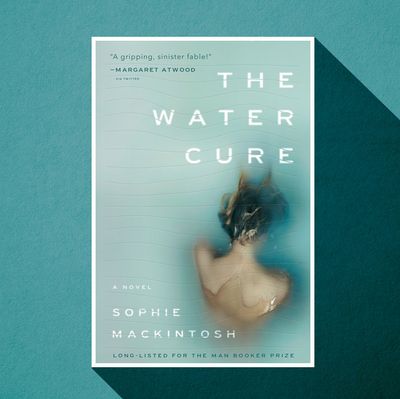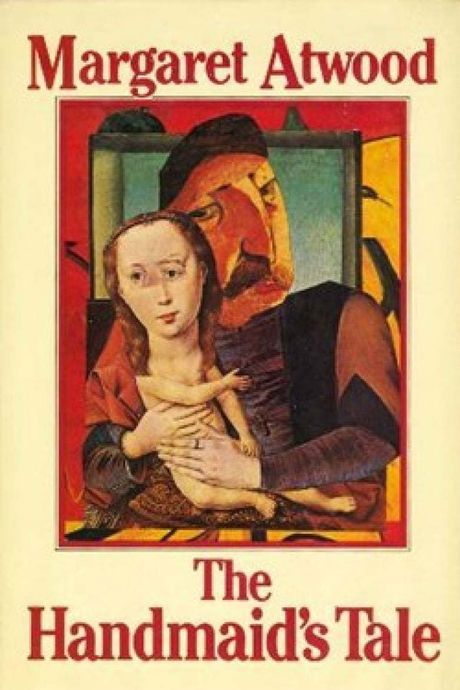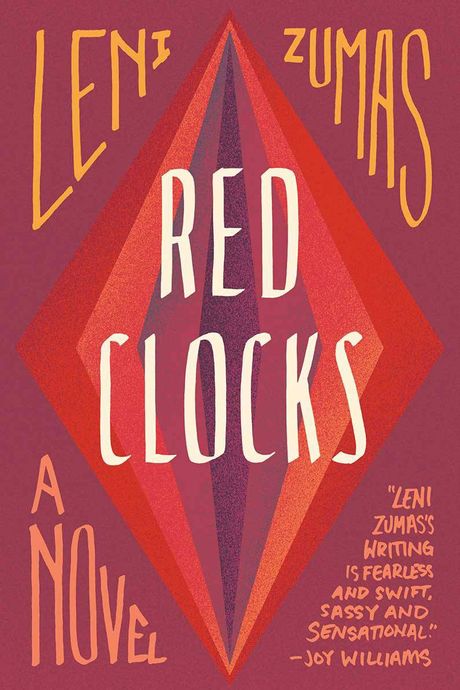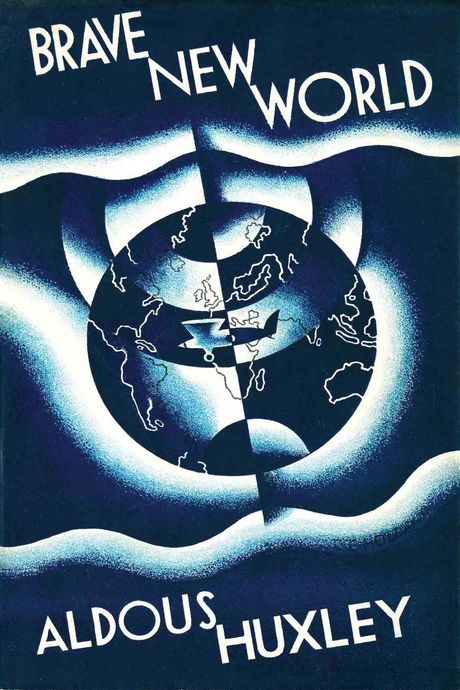
Dystopian fiction has been with us for at least a century and a half — that is, for as long as the acceleration of modernity has made us simultaneously desire and fear for the future. We’ve tended to know dystopia when we’ve seen it: the inversion of utopia (the good place) into “a bad place,” as John Stuart Mill defined it in British Parliament in 1868. (Though Lewis Henry Younge coined it as an “unhappy country” 121 years earlier.) In the 20th century, this inverted utopia often took the from of large-scale mechanization run amok, as in Yevgeny Zamyatin’s We or Aldous Huxley’s Brave New World; or as social engineering taken too far, as in Anthony Burgess’s A Clockwork Orange; or as the horrific collision of ideology and human nature, as in George Orwell’s Animal Farm.
In this century, dystopian fiction is more popular than ever, with authors ranging from Haruki Murakami to Kazuo Ishiguro to Gary Shteyngart feeling the need to try it at least once. (Generally, they’re praised for it.) And yet, in the last couple of years, dystopian fiction has both exploded and fundamentally changed as a genre. Most of it — especially the large number of books written by women — doesn’t quite qualify for the label. Rather, today’s “dystopia” hews closer to reality than ever before. Novels like Leni Zumas’s Red Clocks, Ling Ma’s Severance, Christina Dalcher’s Vox, and the best of the bunch, Sophie Mackintosh’s The Water Cure (out today from Doubleday), lead us to wonder at what point the so-called “dystopian novel” will become simply a reflection of the world in which we live.
Zumas acknowledged as much in an interview a year ago when she called her work “paratopian.” “Dystopia feels so solidly separate from us,” she said, whereas a paratopia “is actually happening, maybe next week.” And Mackintosh spoke of both its urgency and its ubiquity with the Guardian last year: “There are so many things happening at the moment, such as #MeToo and the abortion referendum. It shows that women’s bodies are still very much up for debate. I read an article that said that dystopian feminism was ‘a big trend,’ and I thought, ‘It might be a trend, but it’s also our lives.’”
In the dawning days of 2019, this idea of dystopia as reality makes some sense. We live in a world of wildly shifting norms, proliferating dangers, unstable systems and leaders — a world, in other words, in which the future’s menace feels more or less imminent. The question these novels are posing is therefore not so much whether the world will end, but how, and how soon? The challenge of such fiction is to strike a balance between reality and fantasy, becoming neither too sociopolitically on the nose nor unmoored from urgent concerns. And whereas classic dystopian fiction trafficked in the faceless villainy of Big Brother, the best of its modern descendants are able to implicate us in the future so nearly at hand — humanizing antagonists as people making selfish choices in the face of dilemmas at one fantastical and painfully realistic.
In Ma’s Severance, for instance, there are infected zombie people and a standard, we-need-to-make-it-to-“the Facility” plot device, but the novel’s end-of-world scenario is the culmination of individual decisions. Labor exploitation at an Asian book-making factory leads to the spread of a disease called Shen Fever, and Candace, the protagonist, survives, bearing witness not just to evil corporations but also to the complicity of people like herself. (Her company’s Bibles are made in under-regulated sweatshops.) Candace, who lives in Brooklyn, is externally weary of her capitalist habits (“we indulge in Frappuccinos and overpriced packaged vegetables at Whole Foods”), while doing little to change her behavior.
The zombies seem at first to be a genre cliché, but morph into a metonymic symbol for capitalism: they adhere to menial, quotidian tasks, working, tidying, and shopping themselves to death. Likewise, Zumas’s Red Clocks follows a standard dystopian plot, but its premise — political leaders outlaw abortion in the United States — is based on real people following through on real beliefs. “What you do every day matters,” Candace says. “If we don’t listen, we might just get what we deserve.”
This kind of individual-level agency has long been the most frightening aspect of dystopian fiction, but it has tended to slip under the radar in past iterations of the genre. Orwell’s 1984 is most disturbing not so much for the totalitarian government as for when Winston gives in to O’Brien and betrays Julia. The scariest thing about Shirley Jackson’s short story “The Lottery” is not the horrifying ritual of human sacrifice but the community’s complete acceptance of it. This current style of dystopia rightly brings that human agency to the fore. In doing so, these novels more accurately portray individuals as controlling institutions rather than the other way around; they also show how individuals often use these institutions for ill: to exploit laborers, as in Severance, to enforce anti-abortion laws, as in Red Clocks, or to (more ridiculously) curtail speech to 100 words, as in Vox.
Vox, incidentally, is a sort of dystopian version of the current dystopia boom — a warning of the worst that can happen to the genre, given the tendency of publishers to drive successful trends into the ground. In the wake of Dalcher’s success, one can almost imagine publishers convening to wonder, what if there was a novel in which women only had 50 words, or 25? Perhaps worse (that, or it’s a genius comedic move), someone allowed the socialite sisters Kendall and Kylie Jenner to co-write (or have ghostwritten — Kylie couldn’t recall much of the plot during an interview) a novel called Rebels: City of Indra, the Story of Lex and Livia. People living in Indra, “a self-sustaining biosphere,” are only allowed to have one child. The characters have “ice-cold eyes” and “curling smile[s].” (You get the point.) And while Margaret Atwood’s The Handmaid’s Tale is perhaps the Ur-female-dystopia novel, her decision to publish a sequel, The Testaments, later this year feels like an almost too-perfect capstone on the trend: the genre coming full-circle from vital originality to cynical recycling.
Perhaps The Testaments will be genius, and I will gladly eat my words; perhaps we owe Atwood the chance at a sequel given that she was one of the first to marry feminism to dystopia — a union built to last. Indeed, it’s in the realm of gender that the best of modern dystopian fiction does its hardest work — and, unlike in Vox, achieves a level of nuance that subverts black-and-white gender narratives.
In The Water Cure, Mackintosh creates a fantastical universe out of a real-world impulse — the male desire to control. “King” is a father to three girls, upon whom he enacts “strange experiments with our hearts,” as one of them says, while they’re isolated on a remote island. One experiment is the “water cure,” a waterboarding-like purging ritual meant to harden the girls in case men ever come to the island. As in many other sheltered-young-people stories, the girls are told that the outside world — particularly the male part of it — is “toxic.” But the novel is able to escape its genre’s usual snares because it deals with gender in a way that’s fundamentally true. While Mackintosh notes the literal “toxicity” of men and their desire for control, she also shows how such an unexamined, blanket fear of a gender can be wielded as a tool of oppression in and of itself. The girls are led to believe that all men are incredibly violent, which, paradoxically, keeps them under the control of King, who enacts his own form of psychological violence in the name of protection. When the girls finally do encounter a group of men, there is not the immediate, awful violence they’d been groomed to expect but something more realistic. This is a novel at once of its time and for all time — a fable that underscores not just how humans act now but how they have always acted: with general selfishness and a desire for control.
In the past, most feminine utopias like the island in The Water Cure have been places where women have chosen to hide themselves from men, as in Charlotte Perkins Gilman’s Herland or the comic-book series Wonder Woman. Other times, men are killed off with plagues, as in Joanna Russ’s A Few Things I Know About Whileaway, leaving women to live in relative calm. But in all such cases, the lesson has been an overly simplistic one: men are bad, women are good; men bring war, women bring peace. To look at the real world, however, is to see the many Kirstjen Nielsens, Nikki Haleys, and Kellyanne Conways who do their best to uphold the most negative kinds of patriarchal policies — women actively working against women’s interests. Naomi Alderman’s novel The Power, from 2016, highlighted this truth, depicting a world of women who are as corruptible by power as men. (Alderman’s premise is that women are able to send out electrical currents from their fingers, making them the more powerful sex.)
While these authors imagine their narratives as plausible dystopias or “paratopias,” others might view them in the opposite way: as nostalgic utopias. Ma seems to admit as much in Severance when Candace takes advantage of a ravaged, empty Manhattan in order to take pictures for her blog. The abortion laws of Red Clocks aren’t far off from the stuff of certain conservatives’ dreams (which a Mike Pence presidency or the current right-lurching Supreme Court could turn into the stuff of reality). And the oppression and control of young women in The Water Cure reflects a certain type of man’s desire. “Even if it is a failed utopia, at least we tried,” Mackintosh coyly writes, as if to say some might consider her island utopic.
It is easiest — and most comforting — to live in a mind-set that understands these visions as inoculations (like Orwell’s or Huxley’s imaginings) against what everyone agrees would be a nightmarish future. But not everyone agrees on what is right and wrong. This current set of dystopian fictions tends to live within the context of a regressed femininity, basically a form of mid-century American womanhood — to be quiet, as in Vox; to be out of sight, as in The Water Cure; to provide children even against their will, as in Red Clocks. But as anti-vaxxers would turn society back to a time before a cure for measles and polio, and as authoritarians desire a return to fascism, there remains a cohort of both men and women who long for a time of submissive womanhood — and what might seem dystopian to some might therefore be welcomed by others.
Even the dystopian genre itself tips both ways. There are a variety of novels billed as dystopian that most of the readers of the aforementioned fiction would consider anything but. Jean Raspail’s 1973 French novel The Camp of the Saints, for instance, imagines a world in which immigration is unfettered, and “dark” people take over Europe.
Beloved by the likes of Steve Bannon, the novel is a “dystopian” response to the possibility of open borders and racial mixing. We might all still be able to agree about the classics — that Orwell’s Big Brother, Zamyatin’s social mechanization, and Huxley’s scientific “advancements” are hallmarks of a society gone off the rails, of wickedness manifest. But the current batch of dystopian fiction suggests we may not — at least not all of us — know what evil exactly looks like anymore.
It is difficult to say whether more quality novels of this new dystopian sort — those that provide nuanced views of gender dynamics, agency, and complicity — might lead our world out of its current state. It seems unlikely. But immediate social change is only a rare side effect of dystopian novels. Rather, this updated genre aims to underscore the dark truths of our world, drawing us out from our ennui in a distressingly familiar way.
At a certain point, though, one must ask what the next stage of dystopian fiction could possibly be? If it’s already this close to reality — and if there are already novels like Red Clocks critiquing specific political policies — where can dystopian fiction go? The space between dystopia and reality is shrinking rapidly; it’s not the future we’re worried about any longer, but the results of our present-day actions and outlooks. In ten years’ time, when we talk about “dystopian fiction,” we might call it “fiction.”





